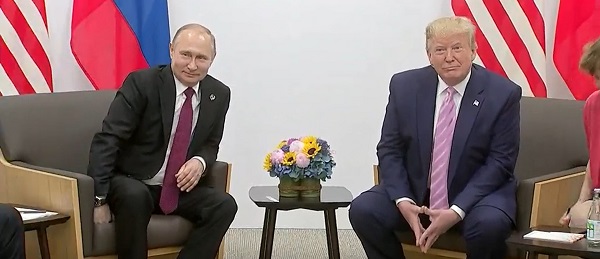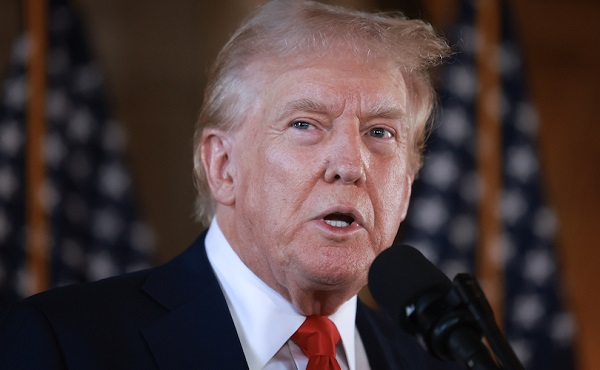conflict
Energy Security in a Turbulent World: Canada’s Moment to Lead

From the Frontier Centre for Public Policy
By Terry Etam
Autos are different than maple syrup, which is different than oil, which is different than natural gas…Ottawa, get out of that freaking UN playpen, we have issues here.
Want an example of how upside down the whole world is? Consider these two quotes, retrieved from the web this past weekend, about whatever the hell is going on in Syria:
“There are posts on X discussing this event, with some suggesting that Assad might have fled to Moscow, though these should be treated with caution as social media can spread unverified information. Official state responses or confirmations from the Syrian government were not detailed in the provided sources… This situation reflects the ongoing instability in Syria, where despite years of conflict, the dynamics can still shift dramatically. However, without more concrete details or official statements, the full implications and the veracity of the breach into Assad’s palace remain to be fully assessed.”
“The Assad regime’s ongoing refusal to engage in the political process outlined in UNSCR 2254, and its reliance on Russia and Iran, created the conditions now unfolding, including the collapse of Assad regime lines in northwest Syria. At the same time, the United States has nothing to do with this offensive…”
Now isn’t that interesting, hey? The best and the worst of social media – a voice of calmness and reason, and an inflammatory one of accusations and denial. One statement urging caution and suspicion of social media; the other hurling accusations and the sort of militant and overly simplified claims that sadly seem to be the hallmark of extremism.
Here’s the funny part: the first calm comment originated from… X’s AI machine Grok, which collates mass data from X, formerly Twitter, the “unhinged right wing platform” which many decry it as. The second inflammatory one originated from – the White House. In whom shall we trust…?
Chaos reigns supreme around the world, and there simply isn’t enough reliable information to leap to significant conclusions. Trump’s recent tariff announcements fit squarely into this mayhem, where the right answer to what will happen is: “No one has any idea where these will lead, including most certainly not Trump.”
It’s hard to catalogue it all, but here goes an attempt to capture some of the most pertinent brick-in-a-washing-machine situations, to possibly guide toward a plausible outlook for the energy industry. If that – a plausible outlook – sounds like a wet-noodle conclusion, well, it is. It should be quite evident that any sort of dead certainty is the realm of fools
Consider all this mayhem unfolding, particularly in comparison to the dreamy world of the 1990s when the Berlin Wall had fallen, and we were all flitting about with flowers in our hair discussing the “peace dividend”.
Today we have:
A global movement to advance the BRICS initiative (Brazil, Russia, India, China, and South Africa), a more-than-significant group of nations that is, for the first time in centuries, looking to carve a future for its mostly ‘developing-nation-status’ participants that is, as India says, not anti-western but non-western. The aligned BRICS nations contain over 3 billion people, which is climbing as more nations seek to join, with a combined GDP of over $30 trillion. These nations do not share the West’s devotion to moralistic causes; they are hungry and want to eat, they want refrigerators and cars, and they want to stop burning dung in their kitchens.
Multiple, simultaneous wars have ensnared the weirdest alignment of countries that may lead to unpredictable outcomes. Let’s start with the poster child for bang-bang bingo, the Middle East. We have…Israel not just fending off but looking to wipe out terrorist organizations that operate in Lebanon, Gaza, Yemen, Qatar (until just a few weeks ago, apparently), and Lord knows where else. All those terrorist organizations trace back to a central head in Iran, who is no doubt in Israel’s crosshairs. Based on this conflict, nations have been forced to align with the Israeli side, or the Iranian side if said nation is close to any one of the tentacles of the Iranian complex.
Now at the same time, Iran is supplying weapons to Russia, which is waging another war that multiplies the minefield of geopolitical relations. China is supporting Russia and, thereby, a de facto supporter of Iran, or kind of, and both support North Korea for some crazy reason. So, by way of association, anyone looking to join the BRICS group is in some way sanctioning what Iran and Russia are doing, including, as Trump called him one upon a time, Little Rocket Man. But Orange Man Bad and Little Rocket Man get along very well, even though this is structurally impossible based on history, and on last year’s ‘rock solid’ alliances.
Now consider that countries like Saudi Arabia, Thailand, Malaysia, and Vietnam have either expressed interest in joining BRICS, or are on their way to membership (the United Arab Emirates has now actually joined). These are significant entities because they are significant trading partners with the US (and the US/west is fully dependent on China anyway for metals/minerals processing, a situation that seems to have yet to fall into the West’s consciousness. What is the West to do when valuable trading partners decide they’d rather join Satan and the Communists’ trading block, rather than the open-if-hectoring arms of the wealthy West?
In a new development, Trump announced 100 percent tariffs on BRICS if they did not make efforts to trade in a manner that would challenge the USD’s status as the global reserve currency. This is even though the US economy is deeply entwined with many countries in BRICS, and these tariffs would rock the US and its voters to the core (with more elections coming up in two years, all this must resolve quickly or boom, there goes the balance of power again).
Now, let’s look at how the madness has permeated the world of energy. We have a new US president who announced tariffs of 25% on any goods from Canada (oil? Who knows?) and who also said he would prefer to see Keystone XL built, thereby increasing the volume of the product he is seeking to keep out via tariffs…? He has pledged to cut American energy prices in half and promote ‘drill baby drill” while cutting oil prices in half will decimate any producer’s desire to “drill baby drill”.
That’s just in the US. Look at what happened at COP29, where the host country’s president apparently used the conference as a networking event to cement more oil and gas production deals. Later in the conference, an OPEC minister took the stage – mere days after the UN Secretary General’s tiresome wailing about the mortal danger we are all in due to the combustion of fossil fuels – to declare that oil was “a gift from God.” Throw all that into a pot, and surprise, surprise, the final conference statement of progress read like a kid’s soliloquy on why his bedroom was such a disaster –but don’t worry, it will never happen again. In other words, just a bunch of jibber jabber, if for no other reason than to cloak that 70,000 freaking people jetted around the world to a remote location to study the suicidal impact of people flying around the world to remote locations. (And climate conferences manage, if nothing else, to land tens of thousands of people in every exotic destination in every corner of the world, all flown in, to shout vigorously about among other things, the ecological horror that is flying. It’s all too funny for words.)
We have Europe on its industrial knees, Germany in particular, because it shut down all its clean baseload energy sources (nuclear) and stopped buying its life blood fuel – natural gas – from Russia because, and here we go again right back into the swamp, of Russia’s invasion of Ukraine. German industrial output is in freefall, auto manufacturers are bleeding red ink because they are forced to limit sales of the cars people want – internal combustion engine ones – because German policy dictates that electric vehicles must make up a specific percentage of sales. Despite Germany’s formidable engineering prowess, the simple observation that if no one buys EVs, no automaker will sell any ICEs – that’s how a forced EV proportion of sales works – and everything crumbles as a result. Volkswagen is looking to shut down German manufacturing plants for the first time ever. It is a crazy industrial policy.
We are now seeing a pushback against the rushed energy transition/net-zero-whenever agenda that is far beyond my imagination (and my imagination is big) because the inevitable has happened – it is hitting people’s pocketbooks. In the latest very big news on that front, the state of Texas is suing BlackRock, State Street, and Vanguard for illegally conspiring to manipulate energy markets and drive-up costs for consumers. Texas Attorney General’s office issued a news release stating: “Over several years, the three asset managers acquired substantial stockholdings in every significant publicly held coal producer in the United States, thereby gaining the power to control the policies of the coal companies. Using their combined influence over the coal market, the investment cartel collectively announced in 2021 their commitment to weaponize their shares to pressure the coal companies to accommodate “green energy” goals. To achieve this, the investment companies pushed to reduce coal output by more than half by 2030.” The Attorney General argues that efforts to restrict coal power have led to increased electricity costs across the United States, resulting in significant revenue gains for the investment companies that hold shares in these firms. Additionally, the news release claims that these companies misled thousands of investors who chose to invest in non-ESG (Environmental, Social, and Governance) funds, aiming to maximize their profits. Despite their claims to the contrary, these funds implemented ESG strategies. Notably, ten other states have joined the lawsuit.
While that is all unfolding, Trump’s threat of a 25 percent tariff on imports of Canadian and Mexican goods could include oil and natural gas. Given that the North American energy market is hugely intertwined, and that natural gas is quite different than oil (gas is to a certain extent a two-way street – for every 3 GJ of natural gas that Canada exports to the US, the US exports 1 to Canada), there is much complexity here to unpack, and I’m not sure anyone is able to… There are many levels of analysis here – economic, political, geopolitical, retaliatory, defense (Are NATO commitments met? Silence from the Canucks), and there isn’t any indication that either Canada or the US grasps the full nationwide repercussions. Autos are different than maple syrup, which is different than oil, which is different than natural gas…Ottawa, get out of that freaking UN playpen, we have issues here.
The most recent feedback out of Canada’s tariff situation, the reports of the conversations between the two leaders, indicate that in the short term, the tariffs are unavoidable until “the US balances its budget.” No one knows what that means, and assuming the worst isn’t a bad idea because nothing is very stable these days. Having said that, tariffs on oil and gas are going to be chaotic, to put it mildly, if for no other reason than the US needs Canadian crude grades that it cannot produce in the short term, and because the US exports natural gas to Canada in significant quantities.
And that’s just the North American perspective. Globally, we are in severe turmoil as well. We have policymakers who cannot comprehend the very basic math involved in the quantities of energy the developing world will want, and at the very same time those Western policymakers are overseeing the maddest race ever to thrive in the AI and crypto mining spaces, both of which are power hogs of unimaginable proportions because each embeds an unusual feedback loop whereby the more power is consumed, the better these things perform, and the more profitable they are, so guess what happens.
Back here in Canada, some excellent thinkers are pointing out that this country needs to start thinking at a somewhat higher level on the energy file at least, such as Heather Exner-Pirot pointing out in the Calgary Herald that Canada should be looking at reviving Keystone XL and Northern Gateway. The article also discusses how we should be accelerating LNG export development. These are excellent points – we need to take control of our energy destiny to the extent possible. Trudeau’s rushed visit to Florida to plead Canada’s case was a stark and somewhat embarrassing display of exactly what the power relationship is here.
Maybe the US election will also be sufficiently jarring in Canada to cause a thunderclap in the hallways in Ottawa on the energy file. Canada is an energy powerhouse – oil, natural gas, nuclear, hydro, renewables where they work, it is a minerals powerhouse, it has world-class agricultural and manufacturing prowess…the list goes on and on.
The world is demonstrably uncertain, but in the chaos is opportunity. Nationally we have become preoccupied with trivialities and attempting to solve the world’s problems – from a point of view that doesn’t even understand them in the first place.
The US election is a wake-up call to Canada, and many other countries as well – stop playing games, stop acting as though elected officials and an army of bureaucrats are our moral compass, and get back to governance; put your thinking hats on like hasn’t been done for a while; focus on strengths; get our own house in order before lecturing the world. Do right by the people that voted for you, not your perceived legacy.
Few countries are as blessed as Canada with pretty much everything. Time to get off our back foot.
Terry Etam is a columnist with the BOE Report, a leading energy industry newsletter based in Calgary. He is the author of The End of Fossil Fuel Insanity. You can watch his Policy on the Frontier session from May 5, 2022 here.
conflict
Trump’s done waiting: 50-day ultimatum for Putin to end Ukraine war

 MxM News
MxM News
Quick Hit:
President Trump is done waiting on Putin. On Monday, he gave Russia 50 days to end the war in Ukraine or face 100% tariffs and sweeping secondary sanctions. It marks a sharp shift — combining economic pressure with a new NATO deal to rush U.S. weapons, including Patriot missiles, to the front lines.
Key Details:
- Speaking from the White House on Monday, Trump warned of 100% tariffs and sweeping secondary sanctions unless Putin agrees to a peace deal by the 50-day deadline. “We’re very, very unhappy,” Trump said, adding the penalties will hit not only Russia but any nation still trading with it.
- Trump also confirmed a NATO agreement to purchase U.S. weapons for immediate transfer to Ukraine, saying, “This is billions of dollars worth of military equipment… quickly distributed to the battlefield.”
- The announcement came as Russian forces claimed new ground in eastern Ukraine and launched record missile strikes. Ukrainian President Zelensky met with Trump’s envoy in Kyiv and thanked the president for “important signals of support.”
🚨 TRUMP JUST GAVE PUTIN AN ULTIMATUM:
50 DAYS to make a PEACE DEAL in Ukraine — or face ***100%*** TARIFFS. pic.twitter.com/CbX1cYRxd5
— MxM News (@mxmnews) July 14, 2025
Diving Deeper:
President Donald Trump on Monday made clear he’s done waiting. After months of warnings and diplomatic overtures to Moscow, the commander-in-chief delivered a direct ultimatum: end the war in Ukraine within 50 days or prepare for economic devastation. The deadline marks a dramatic shift in Trump’s posture — from seeking a deal to forcing one.
“We’re going to be doing very severe tariffs if we don’t have a deal in 50 days — tariffs at about 100 percent,” Trump said during a press briefing with NATO Secretary General Mark Rutte at the White House. He described the measures as “secondary tariffs,” aimed at punishing countries still doing business with Russia, and vowed to collapse the economic lifelines keeping Moscow afloat.
The pivot comes as part of a broader strategy recalibration. Since returning to office in January, Trump had sought to fulfill his campaign promise of ending the war “in 24 hours” through direct diplomacy with Putin. That olive branch has now been snapped. Sources close to the administration say Trump’s frustration has grown sharply in recent weeks, especially after a wave of deadly Russian strikes left hundreds of Ukrainian civilians dead or wounded in June.
Rather than continuing to negotiate, Trump is now using American economic power and NATO’s military coordination to tighten the screws. On Monday, he also confirmed a new deal with NATO that will see the alliance buy advanced U.S. weaponry — including the powerful Patriot missile defense systems — and distribute them directly to Ukraine. “Massive numbers,” Rutte emphasized. Trump added that the weapons would be deployed “quickly” and said the U.S. would lead in helping Ukraine repel the increasing onslaught.
“This is billions of dollars worth of military equipment going to NATO… and that’s going to be quickly distributed to the battlefield,” Trump said.
The shift is not just military — it’s diplomatic. Trump’s special envoy, Gen. Keith Kellogg, landed in Kyiv Monday and met with Ukrainian President Volodymyr Zelensky. In a statement after the meeting, Zelensky described the talks as “productive” and said they covered joint weapons production and expanded cooperation with European partners. He also thanked Trump for the “important signals of support and the positive decisions for both our countries.”
Zelensky’s praise underscores how much the relationship has changed. Just months ago, Trump and his team had sharply criticized Zelensky during a February Oval Office meeting, sparking concerns in Kyiv that the White House was preparing to withdraw support. Now, those fears appear to be replaced with a renewed sense of partnership — one rooted in hard power.
The announcement follows Trump’s Sunday pledge to send additional Patriot systems to Ukraine, reversing earlier plans to pause certain military shipments. The White House made that shift in response to Russia’s relentless missile and drone assaults, which have overwhelmed Ukrainian defenses and pushed civilian casualties to a three-year high, according to the UN.
That urgency is not lost on Trump — who, after months of offering an exit ramp, now appears ready to close it off entirely.
conflict
US airstrike on Iran’s nuclear facilities. Was it obliteration?

A satellite image of the Isfahan nuclear research center in Iran shows visible damage to structures and nearby tunnel entrances from recent US airstrikes. / Satellite image (c) 2025 Maxar Technologies.
 Seymour Hersh
Seymour Hersh
The US attack on Iran may not have wiped out its nuclear ambitions but it did set them back years
I started my career in journalism during the early 1960s as a reporter for the City News Bureau of Chicago, a now long-gone local news agency that was set up by the Chicago newspapers in the 1890s to cover the police and fire departments, City Hall, the courts, the morgue, and so on. It was a training ground, and the essential message for its aspiring reporters was: “If your mother says she loves you, check it out.”
It was a message I wish our cable networks would take to heart. CNN and MSNBC, basing their reporting on an alleged Defense Intelligence Agency analysis, have consistently reported that the Air Force raids in Iran on June 22 did not accomplish their primary goal: total destruction of Iran’s nuclear-weapons capacity. US newspapers also joined in, but it was the two nominally liberal cable channels, with their dislike—make that contempt—for President Donald Trump, that drove the early coverage.
There was no DIA analysis per se. All US units that engage in combat must file an “after-action report” to the DIA after a military engagement. In this case, the report would have come from the US Central Command, located at MacDill Air Force base in Tampa, Florida. CENTCOM is responsible for all US military operations in the Middle East, Egypt, Central Asia, Afghanistan, and Pakistan. One US official involved in the process told me that “the first thing out of the box is you have to tell your boss what happened.” It was that initial report of the bombing attack that was forwarded to DIA headquarters along the Potomac River in Washington and copied or summarized by someone not authorized to do so and sent to the various media outlets.
The view of many who were involved in the planning and execution of the mission is that the report was summarized and leaked “for political purposes”—to cast immediate doubt on the success of the mission. The early reports went so far as to suggest that Iran’s nuclear program has survived incapacitation by the attack. Seven US B-2 “Spirit” bombers, each carrying two deep-penetration “bunker-busters” weighing 30,000 pounds, had flown without challenge from their base in Missouri to the primary target: Iran’s Fordo nuclear facility, concealed deep inside a mountain twenty miles north of the city of Qom.
The planning for the attack began with the knowledge that the main target—the working area of the nuclear program—was buried at least 260 feet below the rocky surface at Fordo. The gas centrifuges spinning there were repeatedly enriching uranium, in what is known as a cascade, not to weapons-grade level—uranium-235 isotopes enriched to 90 percent—but to 60 percent. Further processing to create weapons grade uranium, if Iran chose to do so, could be done in a matter of weeks, or less. The Air Force planning group had also been informed before the bombing raid, most likely by the Israelis, who have a vast spy network in Iran, that more than 450 pounds of the enriched gas stored at Fordo had been shipped to safety at another vital Iranian nuclear site at Isfahan, 215 miles south of Tehran. Isfahan was the only known facility in Iran capable of converting the Fordo gas into a highly enriched metal—a critical early stage of building the bomb. Isfahan also was a separate target of the US attack on Fordo, and was pulverized by Tomahawk missiles fired by a U.S. submarine operating in the Gulf of Aden, off Yemen.
As a journalist who for decades has covered the nascent nuclear crisis in the Middle East, it seemed clear to me and to informed friends I have in Washington and Israel that if Fordo somehow survived its bunker-buster attack, as was initially suggested, and continued to enrich more uranium, Isfahan would not. No enrichment, no Iranian bomb.
I’ve been frustrated and angry at cable news coverage for years, and that includes Fox News, too, and decided to try and find the real story. If your mother says she loves you, check it out. And I checked out enough of it to share.
I was told that “the first question for the American planners was how big was the actual workspace at Fordo? Was it a structure? We had to find that out before we got rid of it.” Some of the planners estimated that the working space “was the size of two hockey rinks: 200 feet long and 85 feet wide.” It came to 34,000 square feet. The height of the underground working space was assumed to be ten-and-a-half feet—I was not told the genesis of that assumption—and the size of the target was determined to be 357,000 cubic feet.
The next step was to measure the power of the dozen or more bunker-busters that were planned to be “carefully spaced and dropped” by the US B-2 bombers, using the most advanced guidance systems. (During one high-level session in Washington, one of the Air Force planners was asked what would happen if the B-2’s guidance systems were corrupted by an outside signal. “We’d miss the target” was the answer.)
I was assured that even if the rough estimate of the working space at Fordo was far off, the bombers targeting Fordo each carried a 30,000-pound bomb with an explosive payload of as much as five thousand pounds, which was more than enough to pulverize the mythical hockey rinks, or even a much larger working space.
Some of the bombs were also outfitted with what is known as a hard target void sensing fuze, which enabled the bombs to penetrate multiple layers of a site like Fordo before detonating. This would maximize the destructive effect. Each bomb, dropped in sequence, would create a force of rubble that would cause increasing havoc in the working areas deep inside the mountain.
“The bombs made their own hole. We built a 30,000-pound steel bullet,” the official told me, referring with pride to the bunker-busters.
Most important, he said, was that there were no post-strike hints detected of radioactivity—more evidence that the 450 pounds of enriched uranium had been moved from Fordo to the reprocessing site at Isfahan prior to the US attack there, which was code-named “Midnight Hammer.” That operation included a third US strike at yet another nuclear facility at Natanz.
“The Air Force got everything on the hit list,” the official told me. “Even if Iran rebuilds some centrifuges, it will still need Isfahan. There is no conversion capability without it.”
Why not, I asked, tell the public about the success of the raid and the fact that Iran no longer has a potential nuclear weapon?
The answer: “There will be a top-secret report about all of this, but we don’t tell people how hard we work. We tell the public what we think it wants to hear.”
The US official, asked about the future of the Iranian nuclear program, quickly acknowledged that “there is a communication problem” when it comes to the fate of the program.
The intent of the strike planners, he said, “was to prevent the Iranians from building a nuclear weapon in the near term—a year or so—with the hope they would not try again. The clear understanding was that there was no expectation to ‘obliterate’ every aspect of their nuclear program. We don’t even know what that is.
“Obliteration means the glass—[eliminating] Iran’s nuclear program—is full. The planning and the results are the glass is half-full. For Trump critics, the results are the glass is half-empty—the centrifuges may have survived and four hundred pounds of 60 percent enriched uranium are missing. The bombs could not be assured to penetrate the centrifuge chamber . . . too deep, but they could cover them up [with rocks and other bomb debris] and in the process cause unknown damage to them.
“Whether the 60 percent [enriched uranium] was there or not is irrelevant because without centrifuges they cannot refine it to weapons grade. Add to this the research and refinement and conversion from gas to metal—required for a bomb—at Isfahan are also gone.
“Results? Glass is half-full . . . a couple of years of respite and uncertain future. So now Trump’s defense is Full Glass. Critics? Half-empty. Reality? Half-full. There you are.”
The immediate beneficiary of the use of US force in Iran will not be a more placid Middle East, but Israel, and Prime Minister Benjamin Netanyahu. The Israeli Air Force and army are still killing massive numbers of Palestinians in Gaza.
There remains no evidence that Iran was on the cusp of becoming a nuclear power. But as the world has known for decades, Israel maintains a significant nuclear arsenal that it officially claims does not exist.
This is a story not about the bigger picture, which is muddled, but about a successful US mission that was the subject of a lot of sloppy reporting because of a reviled president. It would have been a breakthrough had anyone in the mainstream press spoken or written about the double standard that benefits Israel and its nuclear umbrella, but in America that remains a taboo.
Subscribe to Seymour Hersh.
For the full experience, upgrade your subscription.
-

 Alberta2 days ago
Alberta2 days agoMedian workers in Alberta could receive 72% more under Alberta Pension Plan compared to Canada Pension Plan
-

 COVID-192 days ago
COVID-192 days agoSen. Rand Paul: ‘I am officially re-referring Dr. Fauci to the DOJ’
-

 Crime2 days ago
Crime2 days agoDEA Busts Canadian Narco Whose Chinese Supplier Promised to Ship 100 Kilos of Fentanyl Precursors per Month From Vancouver to Los Angeles
-

 Education2 days ago
Education2 days agoTrump praises Supreme Court decision to allow dismantling of Department of Education
-

 Business2 days ago
Business2 days agoCanada must address its birth tourism problem
-

 Business2 days ago
Business2 days agoConservatives demand probe into Liberal vaccine injury program’s $50m mismanagement
-

 National1 day ago
National1 day agoDemocracy Watch Blows the Whistle on Carney’s Ethics Sham
-

 International1 day ago
International1 day agoMatt Walsh slams Trump administration’s move to bury Epstein sex trafficking scandal





